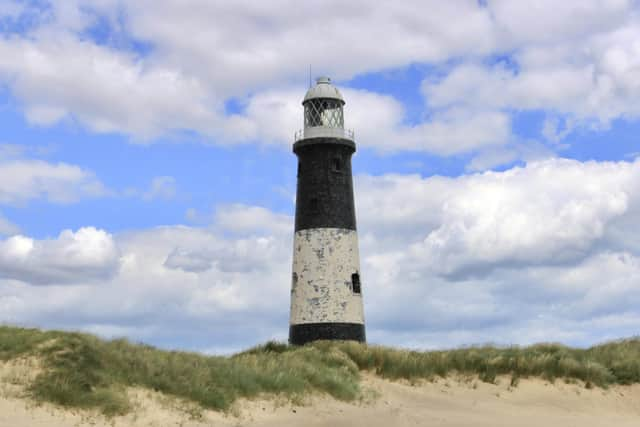Spurn Lighthouse: The Yorkshire lighthouse that has been saving lives for almost 600 years
The first reference to a lighthouse being built as an aid to navigation was in 1427, though little is known about the structure.
By the 18th century there were two lighthouses, one low and one high, built by the Leeds-born civil engineer John Smeaton.
Advertisement
Hide AdAdvertisement
Hide AdThese so-called “leading lights” were used to guide vessels entering shallow, dangerous waters and for position-fixing.


Not long after construction, the low light was washed away and replaced by a another lighthouse, the remnants of which can be today on the Humber side.
What is now known as the New Spurn Lighthouse (pictured) was built in 1895.
The round brick tower, 128ft in height and painted black and white, was designed by Sir Thomas Matthews, who also built the lighthouses at Beachy Head, Dungeness and Portland Bill in the English Channel and St. Mary’s Lighthouse on the Northumberland coast.
Advertisement
Hide AdAdvertisement
Hide AdWhen operational the main light was visible for 17 nautical miles (31km) and flashed once every 20 seconds.
The lamp was initially lit by oil, then converted to electricity in 1941, and for a time fuelled by acetylene gas before a newer gas-driven light - flashing every 15 seconds - was installed in 1957.
At the same time the lighthouse was automated, and the keepers moved out.
In 1985 the light was discontinued due to improvements in marine navigation technology.
Advertisement
Hide AdAdvertisement
Hide AdIn 2013 the Yorkshire Wildlife Trust, which runs Spurn as a nature reserve, was awarded almost £500,00 to restore the structure, and it is now open to the public as part of the Trust’s acclaimed Spurn Safaris on a Unimog all-terrain vehicle.
Comment Guidelines
National World encourages reader discussion on our stories. User feedback, insights and back-and-forth exchanges add a rich layer of context to reporting. Please review our Community Guidelines before commenting.